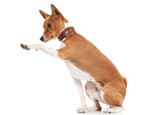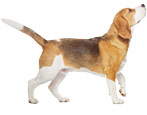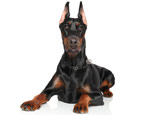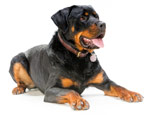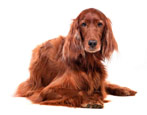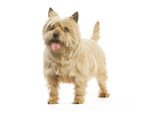Can dogs be given bread and which one is better to feed?

Every dog breeder is familiar with this situation. The kitchen, the hostess, the dog with plaintive eyes, begging for some delicacy from the table, and, of course, many feel sorry for the pet, it seems that he does not finish eating, and a piece of bread or a sandwich with butter flies in his direction from the table. But rarely does anyone think about whether it is possible to give bread to dogs, and what effect it can have on the health of a pet.

Features of the dog's body
And now let's take a closer look at the features of the dog's digestive system and its difference from the human gastrointestinal tract.
A dog is a predator, and unlike humans, amylolytic enzymes that are capable of breaking down carbohydrates are not secreted in its saliva. Their production begins only at the moment of the first collision with carbohydrate food, so the animal's body adapts to cohabitation with humans. The length of the intestine also differs; it is shorter in predators. As a result, they need more easily digestible foods that do not cause undue stress on the digestive tract.
The dog's stomach came from a wolf, has elastic walls and is able to stretch, acquiring a volume of up to 2.5 liters. Gastric juice consists of pepsin, enzymes, water and a small percentage of salts. Under the action of pepsin, which works more efficiently in an acidic environment, meat and even bones that enter the stomach swell, this is how food is prepared for assimilation. And in the intestines, which is 1/3 in relation to the body, further assimilation of food takes place, which lasts about 15 hours.In humans, the intestines are 1/8 longer in relation to the body, so in humans the complete process can take twice as long.

As you can see from the above features, the digestion of a quadruped is very different from that of a person, although the dog's body can adapt to the nutrition of any food, of course, not without harm to the health of the pet.
Pros and cons of treats
And yet there are times when the dog gets a piece of aromatic bread or a delicious crouton. This is permissible at certain times.
- As a reward for the work done, on which the energy was expended. It is better to give it in the form of crackers, only in this way it will not harm the health of the pet.
- Also, the use of bread is justified in the winter for street (open-air cage dogs) and stray animals. For the latter, perhaps bread will become salvation.
- Crackers will be good for your teeth due to their porous structure, stale bread will help remove dental plaque.
- And rye crackers contain lysine, which has a positive effect on the immunity of the animal.

These are all the positive aspects that bread carries. But there are also negative ones that you definitely need to know about. If this product is abused, the dog can develop certain medical conditions.
- Obesity. Bread is a high-energy product, and even if it is given, it is necessary in small quantities. The most important thing is always to control the amount of carbohydrates in the diet, especially in sedentary pets, as this is fraught with obesity and concomitant diseases of the joints and heart. Here it is necessary to take into account the breed characteristics, for example, a Labrador, a pug, a Chinese crested, a French bulldog have a predisposition to weight gain, for these breeds bread is contraindicated.
- Diseases of the gastrointestinal tract. Digestion of bread is accompanied by additional energy consumption of the body and an increased load on digestion and other organs. Bakery products, especially if they are in excess, can cause frustration or constipation.
- Allergic reactions. They are accompanied by swelling of the paws, redness of the auricles, and scratching on the skin. Allergies are more often caused by baked goods with raisins, sesame seeds and other additives. The following breeds are at risk here: Cocker Spaniel, Bulldog, Mittelschnauzer, Dalmatian, Labrador Retriever, Irish Setter.
- Sweet pastry can provoke tooth decay and diabetes mellitus.

Nuances of use
As a reward, puppies can be given rye crackers and bran bread starting from 3-4 months. As puppies grow up, they are usually very active and require additional sources of energy, especially during training. Bread for puppies does not carry other additional functions, therefore, if necessary, you can replace it with cereals, which will be a source of carbohydrates. For pregnant dogs, the use of bread is permissible, but when choosing, be sure to carefully study the composition. Black rye bread without additives will do.
And in order to avoid risks during the period of feeding the puppies, it is better to exclude bread from the diet of the lactating female.


Based on all these features, we can conclude that bread can be given to a dog, but there are certain rules that must be followed:
- do not give bread every day;
- if your pet has a weakness for baked goods, use them only as a reward;
- breeds and sedentary pets that have a predisposition to obesity, it is better to exclude flour products from the diet;
- it is necessary to exclude bread from the diet for aging animals;
- in no case should you give moldy bread, even if you peel it off;
- sandwiches with butter and various sauces can cause diarrhea;
- bread made from yeast dough is hard to digest in the pet's stomach;
- fresh bread is also not suitable for nutrition and can cause fermentation in the gastrointestinal tract, which can provoke colic;
- do not give the pet the dough, this can lead to serious consequences, up to and including death.

How to choose the best option?
At the moment, there are a large number of recipes for making bread with various ingredients. There are a wide variety of baked goods on the shelves in stores. Some of them are also suitable for dogs.
- In the diet, you can use rusks from rye or grain bread. Stale bread is easier for your pet to digest.
- Biscuit biscuits are also suitable for eating. True, in small quantities.
- You can use toast, just not very fried and without using all kinds of pates and sauces.
- You can please your beloved pet with a homemade cake made from rice or oat flour using vegetables. The dough should be kneaded in water.


There are baked goods that are not recommended to be given to the animal. This list includes certain foods.
- Yeast dough products. They can cause stomach fermentation, bloating, and gas.
- Bread with additives - onions, garlic... It can irritate the stomach lining. In addition, onions and garlic contain a substance that damages hemoglobin, which carries oxygen in the body. This can lead to anemia and poisoning.
- Corn and soy bread difficult to digest and can provoke vomiting and bowel upset
- Pastry with chocolate, raisins, jam, nuts, jams and other sweets at first the pet will like it, but in the process of digestion they will cause heaviness in the stomach and painful sensations. And chocolate is poison for a dog.
- Fried flour products homemade products are also unacceptable.


What to do in unforeseen situations?
It may also happen that the pet stole bread or someone, unknowingly, treated him to an unwanted treat. In this case, don't panic. Provide the pet with enough water and observe the pet for several hours. At the slightest sign of poisoning, vomiting, bloating and diarrhea, use Zoonorm or Enterosgel. For diarrhea, a fasting diet for 12 to 24 hours is indicated. For constipation, an enema will help.
And it is better to go to a veterinary clinic for help from a specialist.
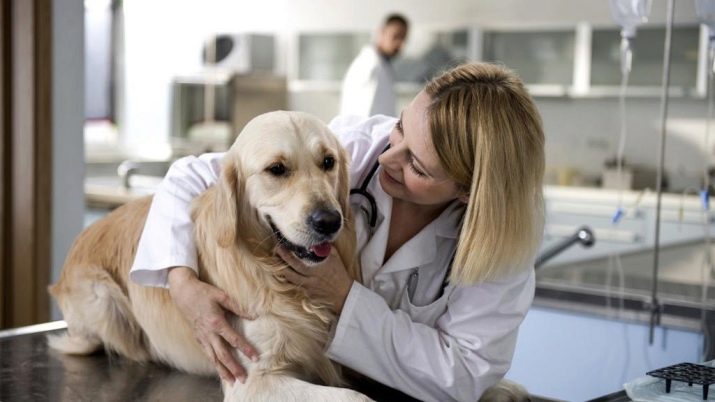
After weighing the pros and cons, you can decide for yourself whether to give your dog bread or not. But keep in mind that by visiting a nearby pet store, you can find treats that will be much healthier and safer for your pet and can easily replace bread. And remember, whichever treat you choose, it should not exceed 10 percent of the daily diet.
For information on what you shouldn't feed your dog, see the video below.



